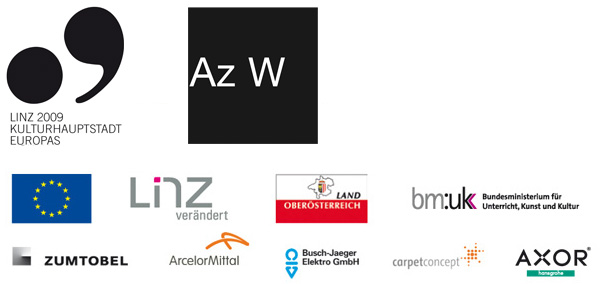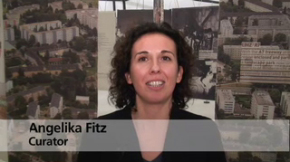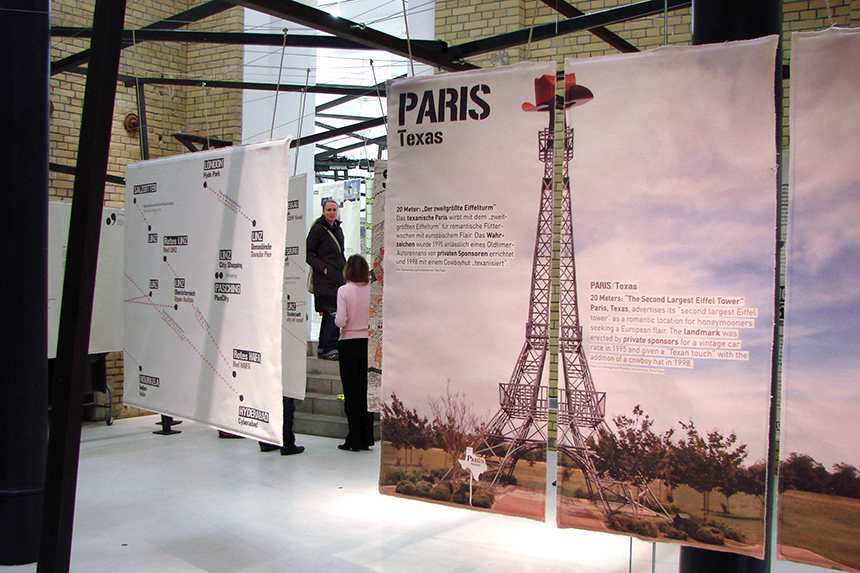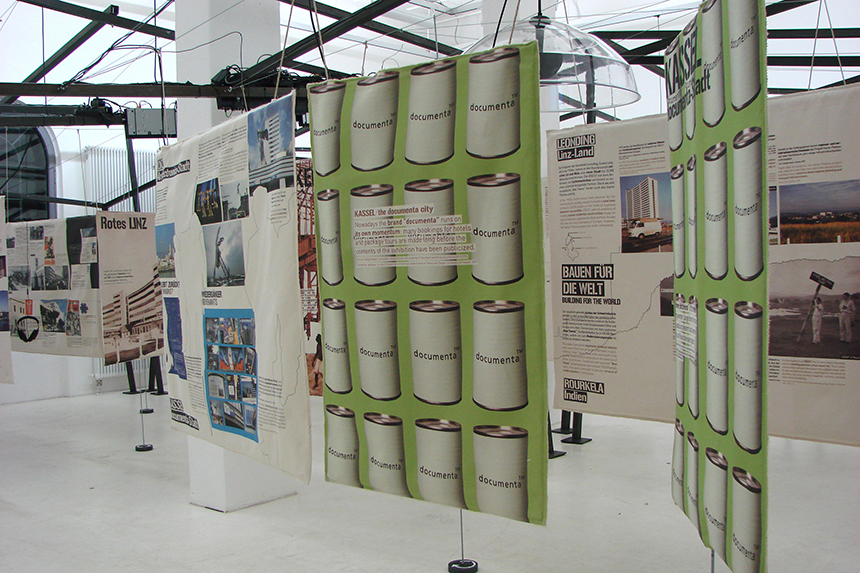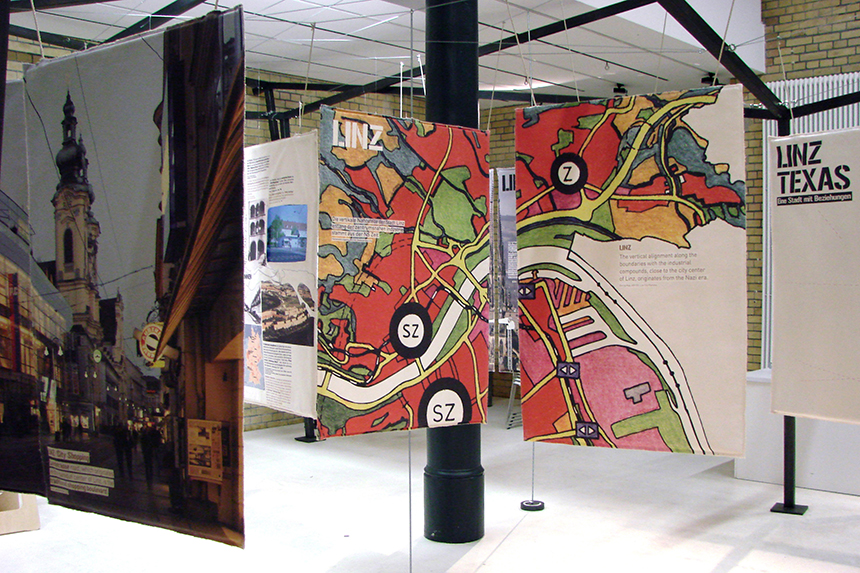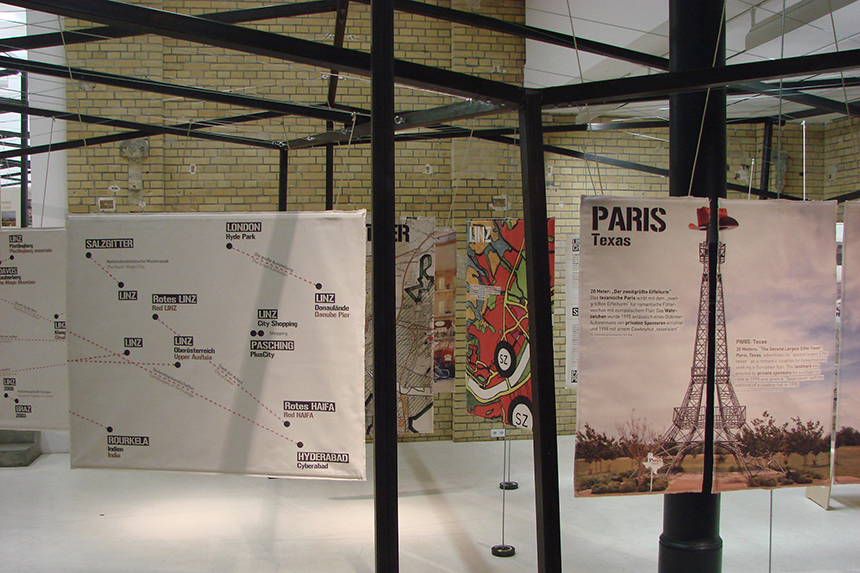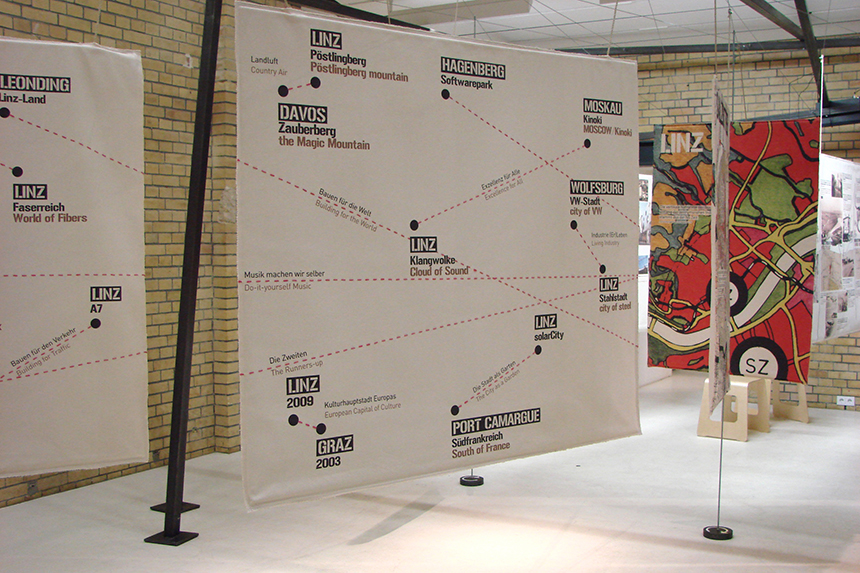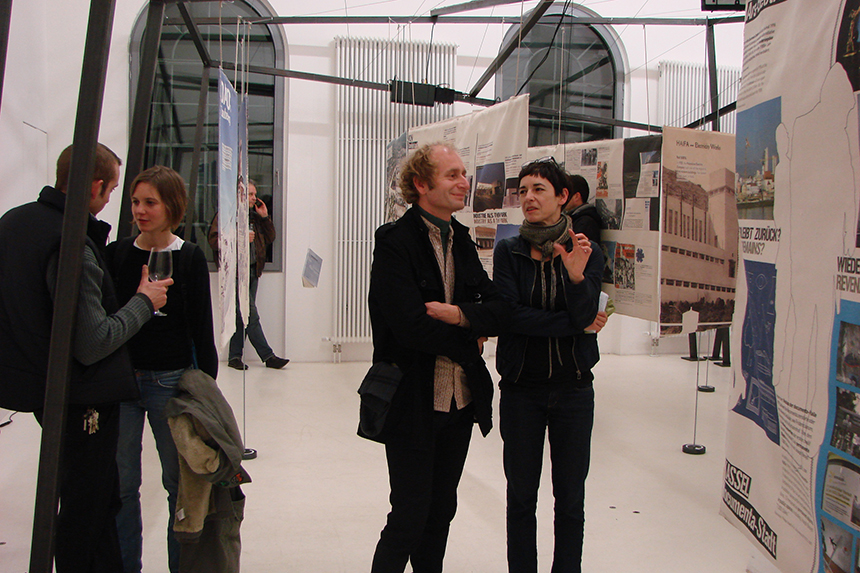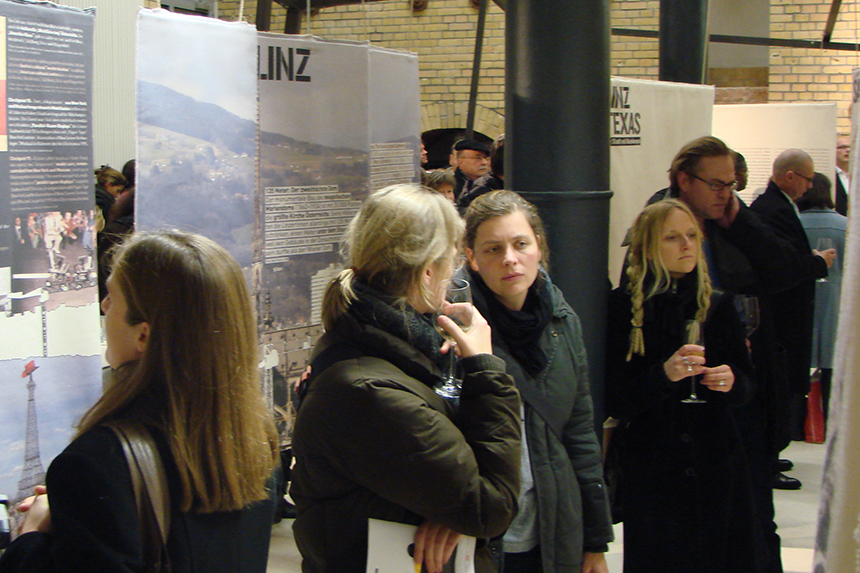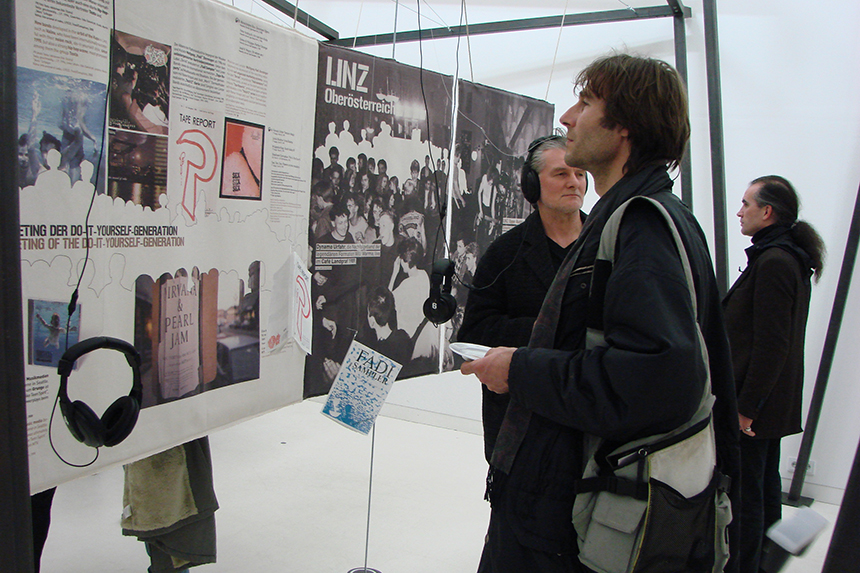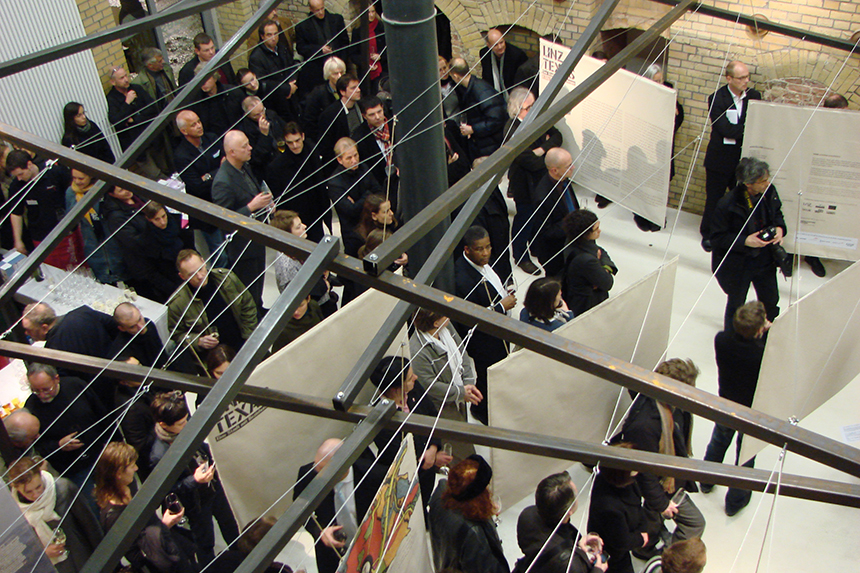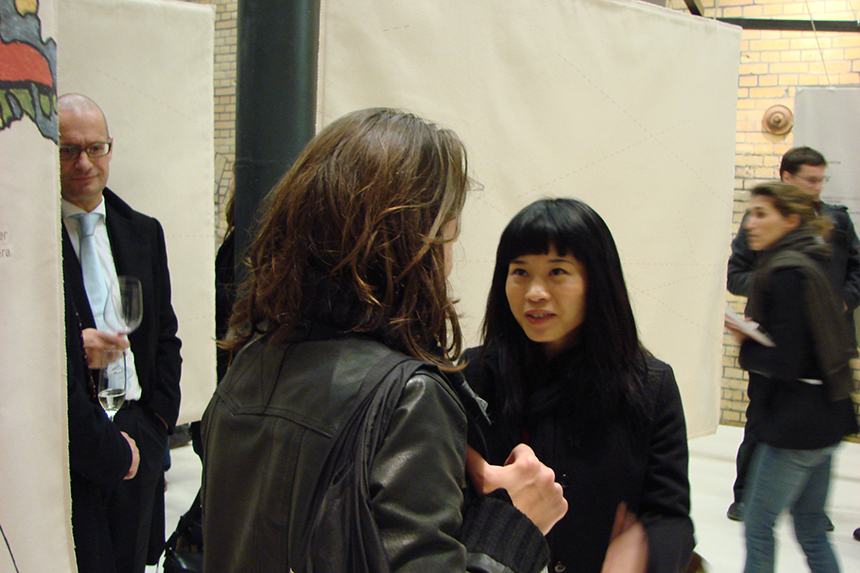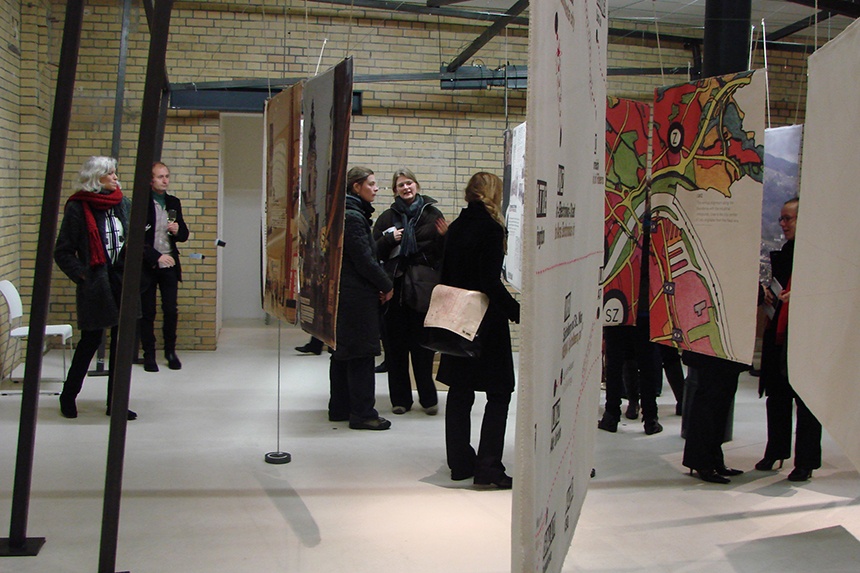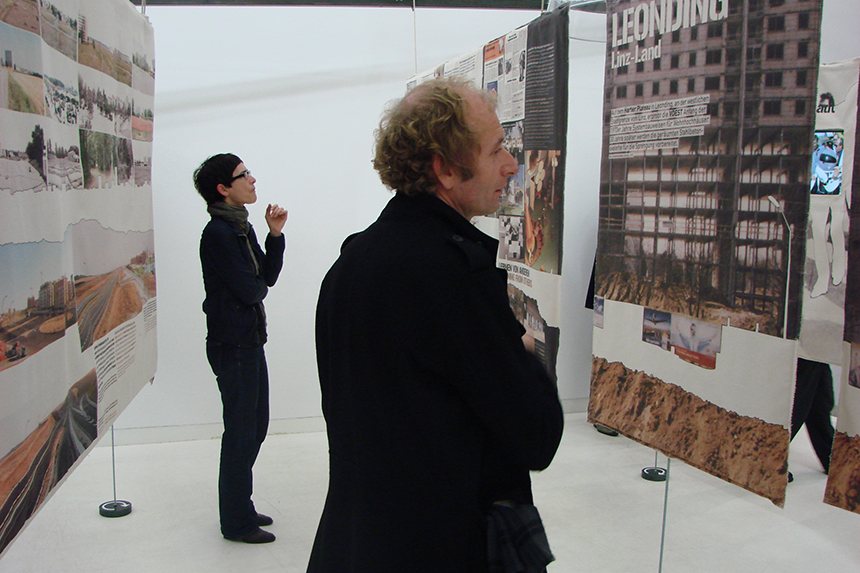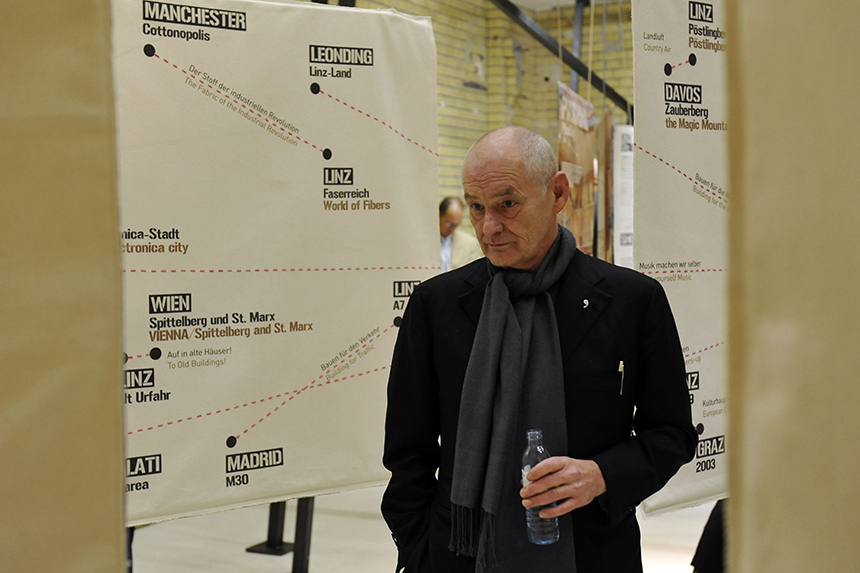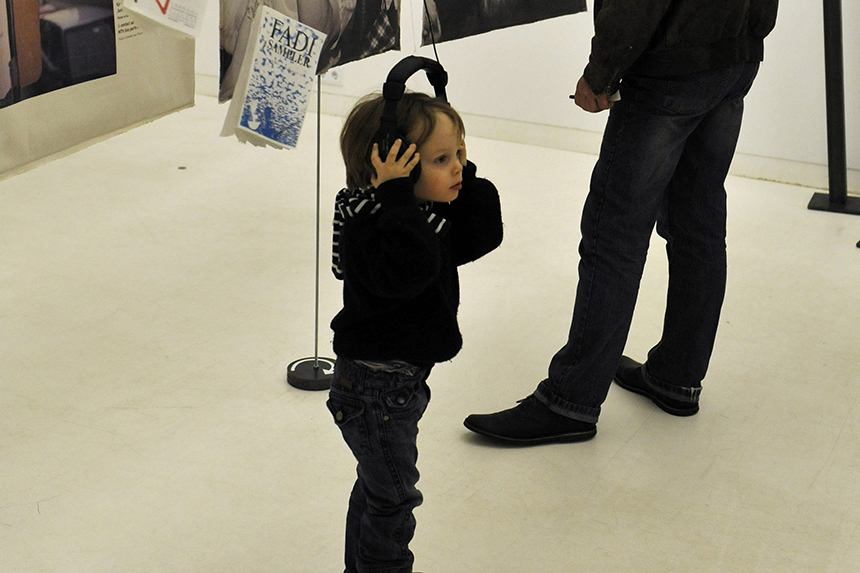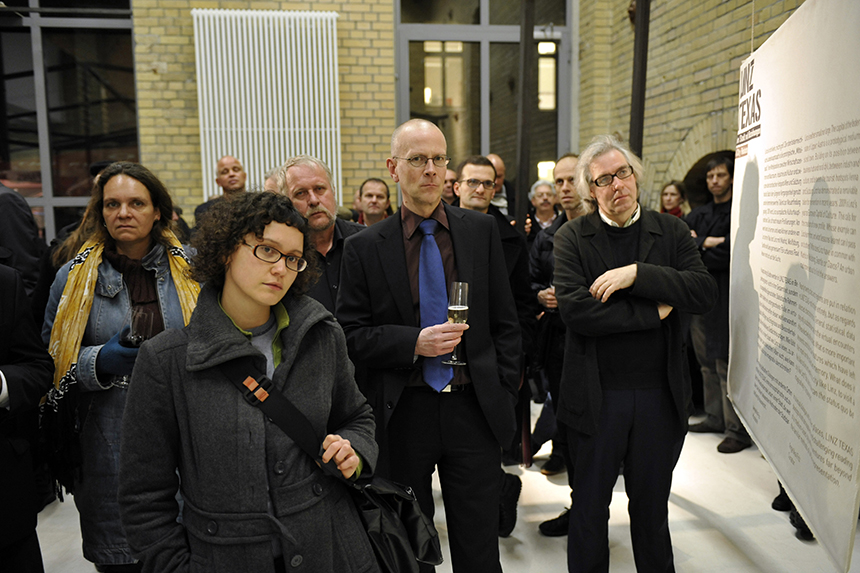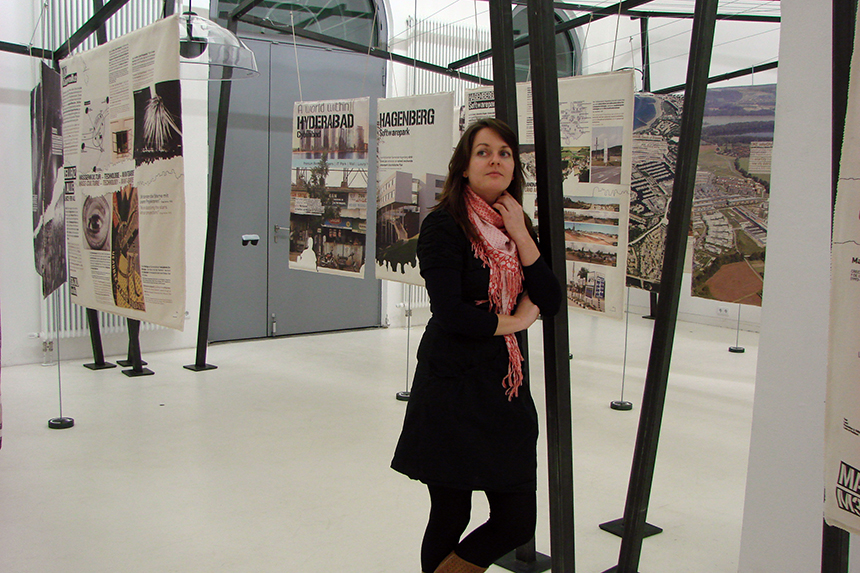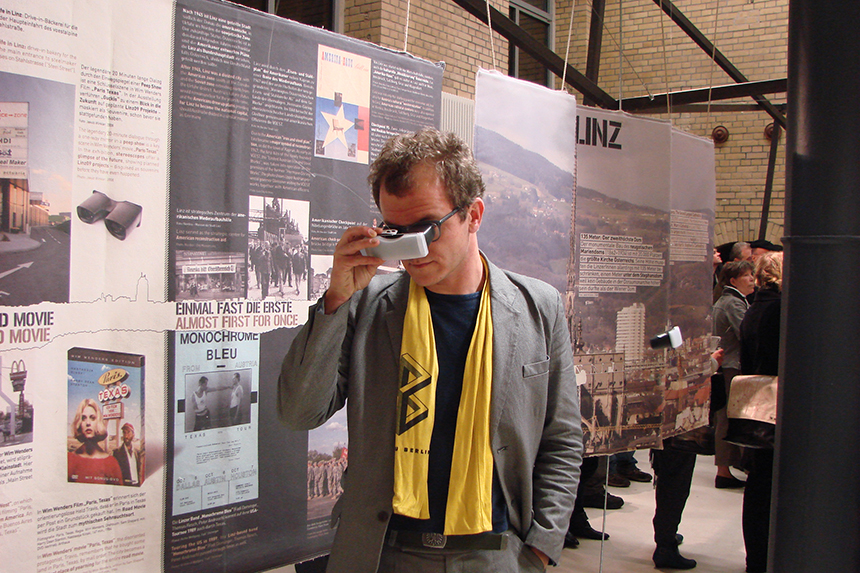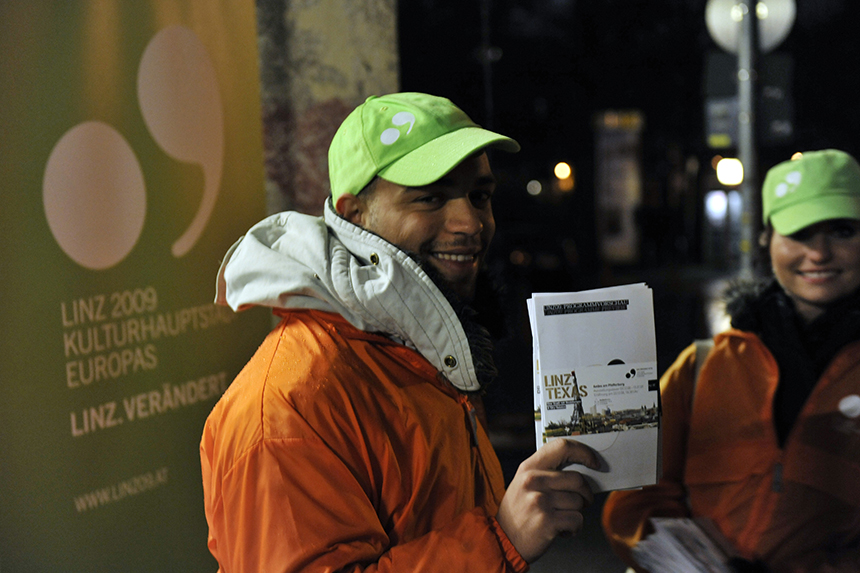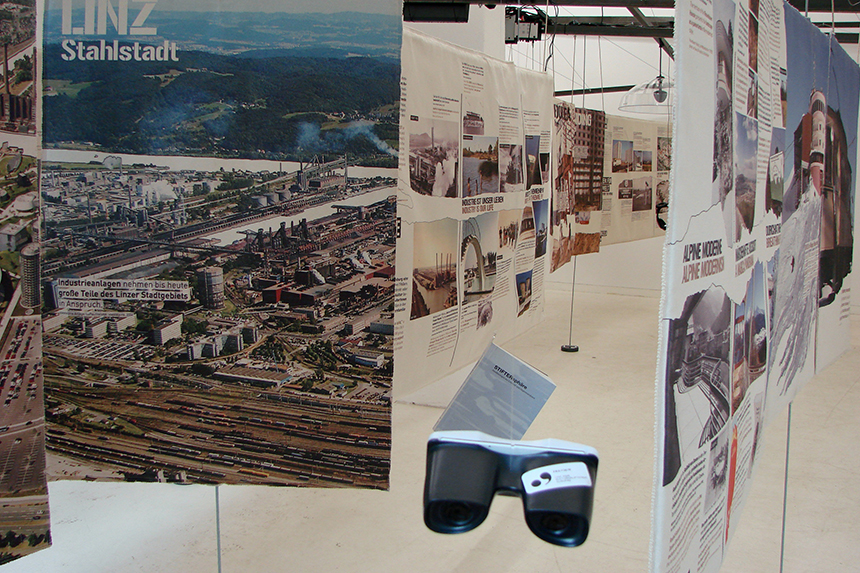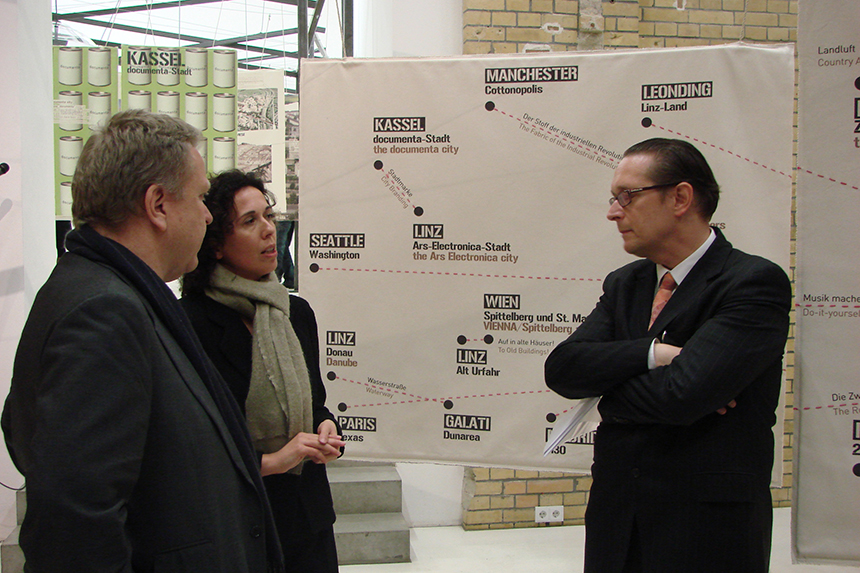Press conference and guided tour: Wednesday, December 3, 2008, 5pm
In 2009 Linz is to be European Capital of Culture. This calls for a new profile. Who can Linz learn from and what can others learn from Linz? What does Linz have in common with Madrid, Wolfsburg or Seattle? Which of its attributes are also to be found in Moscow, Manchester or Davos? An urban road movie pursues the answers to these questions. The capital of the federal state of Upper Austria, Linz, is a prototypical middle-sized town. Making use of its position in the middle, between industry and culture, a commercial metropolis and its natural setting, and between the major tourist hotspots of Vienna and Salzburg, the town has recently shown a remarkable talent for reinventing itself. While it still has image of a dull industrial city rooted in its Nazi heritage, it also hosts internationally established culture events like Forum Design or Ars Electronica. The exhibition LINZ TEXAS A City Relates, a cooperation between Linz 2009 European Capital of Culture and the Architekturzentrum Wien, aims to show affinities with other towns and cities playfully, using strips of images, film excerpts, videos and objects.
In the exhibition LINZ TEXAS A City Relates, the city of Linz and the visitors are sent on an imaginary voyage. Not only to Texas, but all around the world. Around twenty towns, cities and regions are shown with highlighted affinities. Size or location are secondary in the drawing of parallels. More important are events and peculiarities etched on a collective cultural memory, or those that have unjustly been forgotten. In Seattle, for instance, a music scene that can conquer the world from a local arena. Or with Salzgitter as an example, question what it is like to live in a city where the urban fabric and commercial structures bear the signature of the Nazi regime. The Indian city of Rourkela demonstrates that there are other ways of coming to terms with postwar modernism than by simply exploding it. And the technology parks surrounding Hyderabad communicate the same dislocated sense of life experienced by the globalized technological elite one encounters in Linz.
In the form of a visual dialogue, LINZ TEXAS opens up an atmospheric and challenging mode of deciphering urban reality, an approach that goes far beyond hitherto familiar methods of depicting cities. The categories of imagery involved are as diverse as the urban narratives they convey: from private snapshots to professional architectural photography, to newspaper photographs and tourist souvenirs - all of them mobilized to narrate the city's history. What is it like to live in a city such as Linz? To work there? To visit?
Press conference and guided tour: Wednesday, December 3, 2008, 5pm
Cultural studies expert and curator Angelika Fitz will guide representatives of the press through the exhibition, and will be available to engage in conversation conjointly with Martin Heller, Artistic Director of Linz09, over coffee and Linzer Torte.
CREDITS
Concept:
Angelika Fitz, Martin Heller (Linz09),
Dietmar Steiner (AzW)
Curator:
Angelika Fitz
Curatorial assistance:
Christina Nägele
Exhibition architecture:
Heidi Pretterhofer (arquitectos)
Exhibition graphics:
MVD Austria/Barbara Eisenköck,
Michael Rieper,
Christine Schmauszer
Project Management Aedes:
Ulla Giesler
CATALOGUE
A catalogue of the same title, LINZ TEXAS. A City Relates, is being published to accompany the exhibition.
German and English edition © 2008 Springer-Verlag/Vienna. With contributions by Shumon Basar, Angelika Fitz, Klemens Gruber, Martin Heller, Bart Lootsma, Angelika Schnell, Dietmar Steiner, and Roemer van Toorn.
PRESS
For press inquiries and high-resolution photographic images, please contact:
Ulla Giesler (Aedes), Tel.: +49 (0)30 282 70 15, email: [email protected]
Pia Leydolt (Linz09), Tel.: +43 (0)732 2009-37, email: [email protected]
SPONSORS
Cordial thanks to the supporting sponsors of Linz09
The City of Linz
The Federal State of Upper Austria
The Federal Ministry for Education, Art, and Culture in Vienna
The European Union As
well as our Aedes cooperative partners Zumtobel, ArcelorMittal, Busch-Jaeger Elektro GmbH, AXOR Hansgrohe, carpetconcept
LINZ 2009 – EUROPEAN CAPITAL OF CULTURE
Linz – Host City to Europe
2009 will be an annus mirabilis for Linz. In that year the capital of Upper Austria will be the European Capital of Culture, together with Vilnius, the capital of Lithuania: honorific labels galore that are a source of pride to all concerned. More important however is the question: What does that development actually mean? And what changes will it bring?
First and foremost: Europe will become a tangible reality. With a wide array of events, much creative input into the artistic programme and the cooperation of open-minded, inquisitive visitors. The concept of the European Capital of Culture dates back to 1985, and the magnetic pull associated with it has been on the increase ever since. This is because cultural capitals showcase European diversity and offer a wonderful opportunity to let that diversity make a major impact.
That’s why Linz with all its charms and unique characteristics is looking forward to being Europe’s host city as the 2009 Capital of Culture. And there’s also great enthusiasm for giving Upper Austria’s guests a warm welcome and making them feel at home.
A city of possibilities
Linz: 190,000 inhabitants; the hub of an economically thriving region with a population of over half a million; set amidst a lovely landscape on the banks of the Danube an hour and a half from Vienna.
But Linz is much more than that. It is a city whose recent history is made up of chapters as diverse as the dark times of National Socialism and the unparalleled upswing of the last 20 years. It is also a city with a present, one that is unmistakably stamped by its vitality and self-confidence. And, finally, it is also a city in which the future is taken seriously – in the planning that’s done and the action that follows.
And it’s for this very reason that the Capital of Culture year isn’t just pyrotechnics but a milestone on the road to the future. Changes are in the air and they are being greeted by an eagerness for innovation and experimentation. After all, a Capital of Culture initiative that is averse to risk-taking isn’t worth its salt.
Culture – a genuine part of people’s lives
The lineup of events hasn’t been final yet, but the work is proceeding at full speed. It is driven by the wish to imprint images of the city on Europe’s cultural memory. For this purpose a peaceful suspension of normality is to be proclaimed for fantasy and creative freedom to transcend the day-to-day routine.
That culture is not something completely divorced from the rest of one’s life is part of the self-awareness of people in a former predominantly blue-collar town. In Linz, music, theatre, visual arts, film and the innovative ideas of a thriving underground scene are soaked up by appreciative audiences. At the Ars Electronica Festival and the Museum of the Future, in the Lentos Museum of Art, the Brucknerhaus, the Landestheater, the O.K Center for Contemporary Art and the Landesgalerie, at the Festival of the Regions and the Crossing Europe documentary film festival–there are many venues dedicated to culture in Linz. But culture is also played out on the city’s streets and squares, in its green spaces, up and down the river that runs through it.
“Culture for All”
Linz 2009 will follow this utopian motto through. The demand to make top quality accessible to each and everyone is advanced in a spirit of stubborn detachment.
The people behind Linz 2009
A European Capital of Culture involves the heads, hands and hearts of a wide variety of men and women. And people’s readiness to get involved has been a joy to behold. After all, having Europe visiting is a unique opportunity for Linz to show what makes it such a special place. The city as well as the surrounding region, our political parties, and members of the business community ranging from global players to local firms are joining forces to take advantage of this opportunity.
To orchestrate this effort, a thoroughly professional staff has been assembled. Martin Heller is artistic director of Linz 2009 and ultimately responsible for the programme and its impact. This choice of someone from outside was a deliberate one: Heller is a Swiss citizen with extensive international experience implementing major projects of this kind. He knows that Linz will rise to the occasion and come through with flying colors. In his task he will be supported by authors and artists from Linz and around the world. Indeed, it is the artists and authors who are the soul of this adventure. They set the rules the Capital of Culture will follow.
Tremendous sense of anticipation
Linz 2009 is already under way. The preparations going on about town are already evident: construction sites, renovations, enhancement, make over. Joint projects are beginning to emerge in an atmosphere of fruitful reciprocity and mutual support. And they make it possible to share the thrill of anticipation: with the Linz public, with associates in cultural life, government and the private sector, with tourists and even the cultural guests.
One of these projects will be transporting the Linz 2009 message far beyond Austria's borders: the Linz Europa Tour. Upper Austrian musician Hubert von Goisern will be sailing a steamship with a floating stage in tow down the Danube and other key European waterways on a tour featuring a series of musical collaborations with local artists all along the way. The journey in 2007 will head east from Linz to the Black Sea. 2008’s final destination is Rotterdam. The culmination comes in 2009, when all tour participants will converge on Linz for an extended musical extravaganza in the harbour. For Europe, Linz is where it’s happening in 2009.
Programme
The overall programming concept ranges across a spectrum bounded by Europe and the world—not least of all because the city’s past necessitates positioning Linz in a European context. Cooperative efforts with cultural institutions from the city and the province, with pre-existing regional festivals, and with educational institutions, associations and members of the local indie art and culture scene are making it possible to stage a wide array of exhibitions, projects, ideas and concepts for Linz 2009 European Capital of Culture.
Information concerning the programme
For further information about the projects, please see our website www.linz09.at
Diese Ausstellung wurde ermöglicht mit der großzügigen Unterstützung von:
